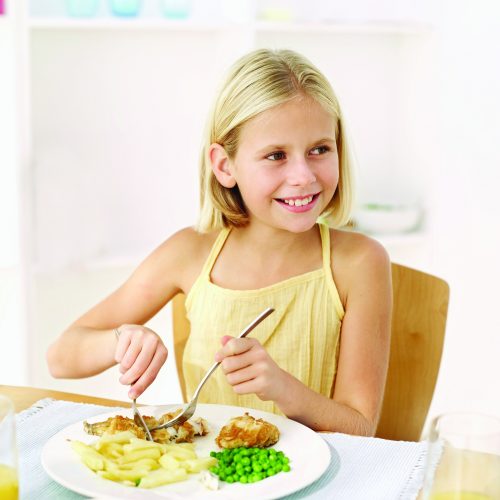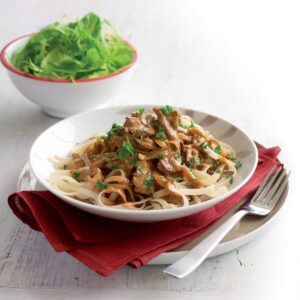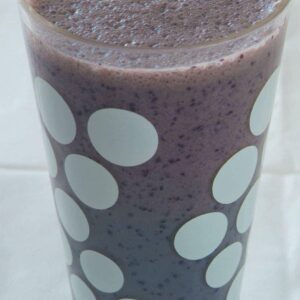
Good nutrition is a cornerstone of good health — and it’s even more important for growing children. Nutritionist Debbie Iles helps make it easier to get your kids eating well at home and at school.
As parents of school-aged children, we can despair every time yet another untouched school lunch lands on the kitchen table, or when another week goes by with the crisper contents ending up in the rubbish bin rather than in small tummies. Sound familiar? We know it can be hard to tell whether your children are getting the nutrition they need — and when it’s OK for them to have treats.
So we have devised some golden rules for healthy eating to help keep it simple (and hopefully keep tussles over their food to a minimum!).
For children (five to 12 years), the amount of food they need to eat can varies considerably depending on their growth rate, amount of physical activity, and body size. There are, however, some general guidelines from the Ministry of Health about the amounts and types of foods children should be eating each day (see table, right).
Here are some other important things to remember when feeding children:
- Three meals and two to three small snacks are recommended for school-age children, at regular times during the day rather than continuous ‘grazing’.
- Aim to increase the proportion of breads and cereals that are wholegrain as children get older.
- Reduced and low-fat milk and milk products are better choices as they have less saturated fat and often more protein and calcium than high-fat alternatives.
- Aim to choose lean meat, fish and poultry where possible, and limit processed meats such as ham and sausages which can be high in saturated fat and salt.
- Offer children water at meal-times and provide a reusable water bottle to take to school.
Healthy eating for kids (5-12 years)
Vegetables – at lease 3 serves per day
- 1 medium-sized potato or kumara (135g)
- 1/2 cup cooked vegetables (eg. peas, broccoli, corn, spinach, puha) (50-80g)
- 1 carrot (75g)
- 1/2 cup salad (60g)
- 1 tomato (80g)
Fruit – at least two serves per day
- 1 apple, pear, banana or orange (130g)
- 2 small apricots or plums (100g)
- 1/2 cup fresh fruit salad (120g)
- 1/2 cup stewed or canned fruit (135g)
- 1 cup no-added-sugar fruit juice (max 1 serve)
Bread and cereals – at least five serves per day
- 1 medium-slice bread (26g)
- 1 pita pocket or tortilla (50-80g)
- 1 roll (50g)
- 2 breakfast wheat biscuits (34g)
- 1/2 cup porridge (130g)
- 1 cup Corn Flakes (30g)
- 1 cup cooked pasta or rice (150g)
- 4 grainy crackers(40g)
- 2 plain sweet biscuits (14g)
- 1 cup plain popcorn
Milk and milk products – at least 2-3 serves per day
- glass of milk or calcium-fortified milk alternative (250ml)
- pottle of yoghurt (150g)
- 2 slices cheese (40g)
Lean meat, poultry, seafood, eggs, legumes, nuts and seeds* – at least 1-2 serves per day (for vegetarians, at least 2)
- 2 slices cooked meat (100g)
- 1 egg (50g)
- 3/4 cup mince or casserole (195g)
- 1 medium-sized fish fillet (100g)
- 1 chicken leg or 2 drumsticks (110g)
- 1 medium-sized paua or kina (100-120g)
- 1/2 can tuna or salmon (90g)
- 3/4 cup dried cooked beans, peas or lentils (135g)
- 1/3 cup nuts or seeds* (50g)
*To reduce the risk of choking, ensure children are at least five years old before giving them small hard foods such as whole nuts and large seeds.
Putting it into practice
So you know what your child should be eating — but it’s a different story in the morning rush to get ready for school! Here are some easy, practical ideas to help.
Five great lunch ideas
- Pasta spirals with some grated carrots, cheese, tomato and a little pasta sauce/dressing.
- Salad and meat/cheese wraps (from the school tuck shop or let them put it together at school so it doesn’t get soggy).
- Homemade (or store/tuck shop bought) avocado or vegie/tofu sushi — be sure to keep it cool.
- Bread roll and frittata (leftover from dinner).
- Homemade ‘fried’ rice (that isn’t fried). Include peas, corn, diced capsicum, carrots, and courgettes.
Five great snack ideas
- Tub of yoghurt — squeezie yoghurt tubes freeze well, too.
- Wholegrain or nut snack bar. Steer clear of the ‘yoghurt’ and chocolate-topped bars. Ideally, you are looking for one that contains less than 1g saturated fat and is less than 600kJ.
- Raisin bread fingers with a little reduced-fat cream cheese spread.
- Sultana/dried fruit snack boxes (kids love novelty and single snack packs of dried fruit can be a winner).
- Canned fruit or tubs of fruit.
Easy swaps to keep kids (and parents) happy
| INSTEAD OF THIS | SWAP FOR |
| Bag of Tiny Teddies | Dry cereal such as Weet-Bix Bites or Sultana Bran Buds in a small container |
| Large savoury muffins | Cheese and mustard mini muffins |
| Takeaway pizza | Homemade pizza |
| Fruit drink poppers | Water bottles filled with water and small fruit pieces, eg. mandarin segments |
| Buttered popcorn | Air-popped popcorn |
| Full-fat ice-cream | Low-fat ice-cream |
| Jelly snakes | A couple of prunes, dates or dried figs |
| Sugary drink | Low-fat fresh fruit smoothie |
| Cake or sweet biscuits | Raisin toast |
Common problems… solved!
Problem: They won’t eat their lunch at school
Solution: If kids don’t like sandwiches, try packing up dinner leftovers. Or make lunch several small ‘bite-sized’ items such as cut-up fruit, cheese cubes, celery with peanut butter and a handful of crackers or pita crisps. Also, have a look at how their lunch is surviving the day. Is it staying cool, going soggy or being left out in the sun? Yoghurts, tubs of fruit in natural juice and water all freeze well to keep lunches cool as well as making popular snacks.
Problem: What foods can help my kids concentrate at school?
Solution: Low-GI carbohydrates such as wholegrain bread and cereals. Make sure they are getting enough carbohydrate-rich foods in their lunchbox and a good breakfast at home.
Problem: What are some healthy, on-the-go breakfasts?
Solution: Make smoothies for them to drink in the car, or make bircher muesli to take with you by soaking oats in milk overnight. Add yoghurt, LSA, banana, blueberries or any other fruit, and pack in small containers. Cereals such as Weet-Bix Bites, shredded wheat parcels or Sultana Bran Buds can be eaten dry — throw in a chilled yoghurt for them to eat separately. If all else fails, try a banana and wholegrain muesli bar, or an Up & Go breakfast drink.
Problem: They always want to eat the same unhealthy foods that their friends eat
Solution: What are their friends actually eating? Could you offer them some healthier alternatives? Homemade mini muffins or pikelets, a few Tiny Teddies occasionally, or a small treat to look forward to on certain days (eg. popcorn Wednesday, pottle fruit in jelly Friday) are all good options. And try different packaging: sometimes fruit and sandwiches hold greater appeal when cut up differently.
Problem: My child won’t drink water
Solution: Chilled water may be more readily accepted. Partly freeze a drink bottle or add ice to a jug in the fridge (accessibility also helps). A dash of fruit juice or a squeeze of lemon/lime/orange also adds a little pizzazz to encourage drinking in hot weather. It’s not a good idea to give soft drinks, sports drinks or juice to quench thirst.
Problem: They always want something sweet after dinner
Solution: Sweet is not necessarily bad. Low-fat yoghurt or custard provide calcium, and canned, dried or fresh fruit can add extra fibre and nutrients. During winter, a warm milk or hot chocolate are also good options.
Problem: They won’t drink milk, how do they get calcium?
Solution: Some kids won’t drink milk but are happy to have it on their cereal or if flavoured. Try adding a spoon of Milo to a glass of low-fat milk. Custard, yoghurt, cheese and some ice creams are good sources of calcium. Skim milk powder can be added to mashed potato and white sauces. Soy or protein-enriched rice milks are other options if they are calcium fortified. Other sources of calcium include tofu, canned fish with bones and almonds.
Problem: What foods are good to eat before sport?
Solution: Aim for carbohydrates. Try a wholegrain sandwich, fruit pancakes, a wholegrain muesli bar or a slice of raisin toast. Fresh fruit, a pottle of yoghurt, a bowl of cereal or a fruit smoothie are other options if you don’t have much time.
Exercise
Keeping our kids active is vital for their health and well-being. Exercise helps children learn more effectively, manage their weight, improves their mood, is a social outlet – and starting young sets them up with healthy habits that can last a lifetime. But what do you do if your child doesn’t like sport, or is feeling self-conscious about getting out and getting active?
Tips to get kids moving!
Getting to school
Make the trip to school part of their active time. Even if you drop them off a few blocks before their school, the bus-stop or train station, they’ll be getting some exercise without thinking about it. You can lead by example — walk or ride with them and get your own exercise at the same time.
Family fun
Children get their exercise and eating habits from their parents. It is just as important to exercise together as it is to eat meals together. Try setting aside at least 2 hours a week to move with your kids — make the most of the weekends and plan what you would all like to do.
Ask them
Involving kids in the decision about what exercise they want to do is a great way to get them interested. It can be easy to pressure your child into sports you enjoyed at their age without taking their own interests, skills and capabilities into account. Sit down together and have a good discussion about sports they want to play or extra-curricular activities they would like to join.
Get close to nature
Getting outdoors is a fun way to get the kids moving, whether it’s for a few hours, the day or for a holiday escape. Try finding your closest national park or camping spot and plan a bushwalk.
Be prepared
Make it family policy to always have a piece of active equipment on hand, rather than relying on technology such as smart phones to keep them entertained. Keep balls, bats, kites, Frisbees or skateboards in the car or your handbag (try a tennis ball!) so they get used to exercising in their free time.
Disguise fitness as fun
If you make exercise fun for them, they won’t even notice they’re doing it! Try taking them paintballing with their friends, set up a family game of capture the flag, or create a gauntlet, obstacle course or treasure hunt for them at home or in the park so it takes the focus off the exercise.
Games can be good
For kids who really don’t enjoy outdoors sport activity, embracing technology can be the answer. Active computer games such as WiiFit involve moving, dancing and jumping can be great exercise and help build their confidence.
www.healthyfood.com










